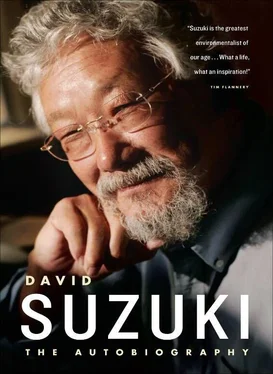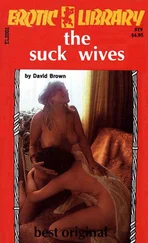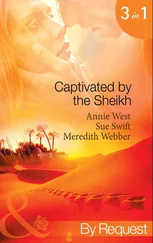Michael Robinson, current chief executive officer of the Glenbow Museum in Calgary, Alberta, has had a lot of experience with PAR and advised us in a series of workshops on the method. Tara began to discuss the PAR process with elders and leaders, taking other advisers into the villages with her. She developed an all-female team that besides herself included an economist and former head of the Vancouver Stock Exchange, Ros Kunin; a lawyer and now judge, Jane Woodward; a PAR expert, Joan Ryan, and a politically experienced First Nations member from Yukon, Lula Johns. People began to refer to them affectionately as the Spice Girls.
As Tara became a familiar visitor in the communities, we began to learn what priorities each village had. The first community to which we sent a PAR worker was Nemiah, a village on the east side of the coastal mountains. The Xeni Gwet'in (Nemiah) people's territory in the drier Chilcotin Plateau includes the headwaters of some of the richest sock-eye runs on the coast. Nemiah is about a four-hour drive on dirt roads from the town of Williams Lake.
Several people applied for the par position, and the band chose Roberta Martell, a garrulous, energetic, and tough young woman who had the drive to achieve all we and the community had hoped for and more. One of her first recommendations was to establish a community-owned laundromat in Nemiah. She started a community garden to provide fresh vegetables and organized the building of two straw-bale houses that were cheaper, more energy efficient, and of better quality than the kinds of homes built for the community under government cost allowances. She recognized the tradition of horse riding presented an economic opportunity to establish trips for tourists.

The par team in Nemiah. Left to right : Roberta Martell, Bonnie Meyers, Maryann Solomon, and Francy Merritt.
Roberta's greatest achievement was to recognize three young women who had the energy, vision, and connections to continue the process of economic development after she left. A film was made about the Nemiah project and broadcast internationally.
WHEN JIM FULTON ASSIGNED Tara to be a diplomat, he spoke of the need for coastal First Nations to unite in recognition of common values and goals if the fish and forests of B.C. were to be sustained. Both Tara and I knew such an initiative would have to come from the First Nations themselves, and while Tara worked on community economic development issues, we watched to see if it would be forthcoming. Tara knew our limited resources could not create jobs on the necessary scale: we hoped leverage could come when a powerfully united coast met with government.
In British Columbia, most First Nations are represented in what's called the B.C. First Nations Summit; delegates meet in Vancouver regularly to discuss issues of mutual interest. In the fall of 1999, timing our overture to coincide with a summit meeting, we invited leaders from the communities Tara had been visiting to meet us and each other to discuss some forestry information. Almost all accepted our invitation.
At the meeting, Art Sterritt from the Gitga'at community of Hartley Bay, and Gerald Amos of Kitamaat village, seconded by several others, commented on the novelty and significance of the gathering and suggested the DSF call a conference of all communities in the central and north coast and Haida Gwaii. We were delighted to do so. We invited the eleven communities, plus Nemiah, to a two-day meeting at the Musqueam Reserve in Vancouver in March 2000 and raised the money to pay all expenses. Members from all twelve communities attended.
After a prayer and welcome from the Musqueam hosts, each attendee made a statement about what he or she was most concerned about and hoped might result from this gathering. To commemorate the millennium, the meeting was called Turning Point. As these tremendously competent elders and leaders spoke, it was clear they had open hearts, and I felt they were desperate to be heard by us. Discussions ensued, and there were tribal differences about historical disagreements and overlapping territory, but all continued work to define various challenges and ponder a unified approach. One discussion group drafted the powerful declaration:
Declaration of First Nations of the North Pacific Coast
PREAMBLE
The North Pacific Coast is a rich, varied and fragile part of the natural world.
The connection between land and sea with people has given rise to our ancient northwest cultures.
We recognize this life source is under threat like never before and that all people must be held accountable.
This united declaration is the foundation for protecting and restoring our culture and the natural world.
We are the ones that will live with the consequences of any actions that will take place in our territories.
DECLARATION
We declare our life source is vital to the sustenance and livelihood of our culture and our very existence as a people.
The First Nations of the North Pacific Coast inherit the responsibility to protect and restore our lands, water and air for future generations.
We commit ourselves:
• to making decisions that ensure the well-being of our lands and waters.
• to preserving and renewing our territories and cultures through our tradition, knowledge and authority.
• to be honest with each other and respectful of all life.
We will support each other and work together as the original people of the North Pacific Coast, standing together to fulfill these commitments.
The DSF attended Turning Point in a supportive role, providing funding, organization, research, and contacts. We made it clear that while we believed the land belonged to the First Nations communities and supported their struggle to have that ownership recognized by government, we wanted the forest and marine ecosystems in which they dwell to remain healthy and productive in perpetuity. People have lived there for thousands of years and need those resources to make a living; parks that exclude First Nations use of the land are not a solution. Our outlook differed from those of environmental groups who just sought more “acres” of parks and protected areas.
We organized and funded many more Turning Point conferences. We brought in First Nations people whose land claims had been settled, to speak of what happened after. As the union strengthened, we worked hard organizing countless separate meetings with forestry companies, mayors of coastal communities, tourism operators, loggers, truckers, government officials, and other environmental groups, who all began to recognize and support the power of the Turning Point process and participants.
The New Democrat provincial government was under pressure to come to some kind of accommodation because the forestry companies knew that until land-title issues were settled, logging in the central to north coast forests would be increasingly contentious. On April 4, 2001, Premier Ujjal Dosanjh signed two documents, one of which set in motion negotiations with the provincial and federal governments and the Turning Point communities on what was termed a government to government to government basis. It was an acknowledgement that the First Nations and the “stakeholders” had legitimate rights.
As the Turning Point organization grew in strength, the foundation's role diminished, and eventually it was time to disengage ourselves. In September 2003, in a formal celebration in Skidegate village on Haida Gwaii, we were thanked and farewells were made. The DSF received a drum, symbol of the heartbeat of the people, and we gave each community a gift of fossilized cedar leaves, a symbol of tenacity and survival.
Читать дальше



![David Jagusson - Devot & Anal [Hardcore BDSM]](/books/485905/david-jagusson-devot-anal-hardcore-bdsm-thumb.webp)









